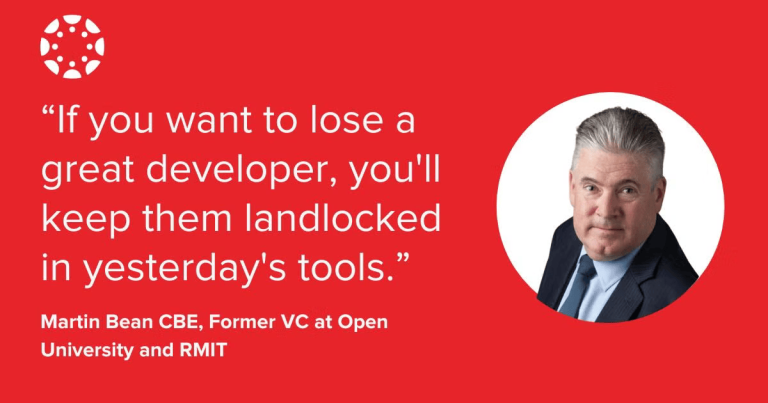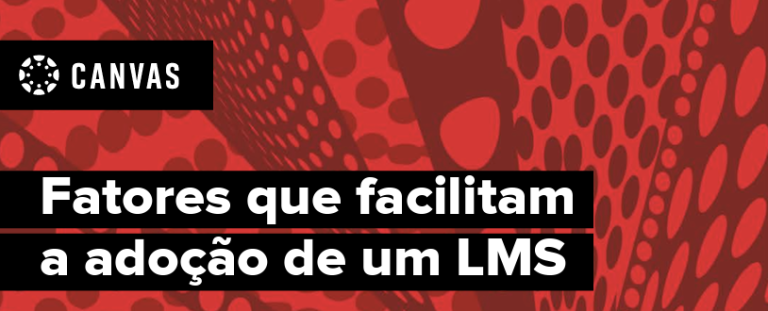Developers who manage open-source VLEs are often unsung heroes of the institution, keeping complex systems running seamlessly 24/7. They know every quirk of their platforms, every patch, every workaround, every performance bottleneck - they’ve seen and solved it all. So when you open up the conversation about moving away from your open-source, legacy VLE, it’s only natural this could stir up feelings of anxiety for your developer.
We're here to debunk the three myths fuelling the "developer's dilemma", so that you can secure their buy-in for this crucial VLE switch.
Myth 1: The developer becomes redundant
Legacy systems often require extensive manual maintenance, making developers feel both indispensable and concerned about potential job loss when you start to propose a VLE switch.
On the contrary, when an institution moves to Canvas, the developer becomes more essential than ever before. They’ll become essential for migrating data, connecting Canvas to other systems, creating scripts, plugins, or middleware for your institution’s unique workflows and so forth.
Rather than becoming redundant, the developer gets the opportunity to lead an institution-wide migration, and how often do they get the opportunity to do that?
“I've led developers my entire career and one thing that I know is if you want to lose a great developer, you'll keep them landlocked in yesterday's tools.”
Martin Bean CBE, Former Vice Chancellor at the Open University and RMIT, a Canvas customer
Myth 2: The developer’s progression is halted
Let’s talk about life after migration. Another common fear is that, even if they aren’t let go, once the migration is complete, the developer is no longer able to use their skills to improve the digital learning experience.
In reality, with less time wasted on the manual maintenance of unwieldy systems, developers are freed up to work on more value-added projects using the latest technology. Developers within the Canvas Community are empowered to:
- Create custom codes and integrations that make Canvas more usable and meaningful to faculty and students
- Access centralised, reliable data, enabling them to work on predictive analytics, learning outcomes tracking, or personalised learning interventions
- Experiment with the latest innovations like AI tutors or adaptive learning tools
- Explore emerging frameworks like React, GraphQL, or microservices architectures to enhance the VLE
What’s more through certifications, professional development programs, and badges, developers can demonstrate their skills in ways that carry real market value.
"One of the greatest strengths of Canvas VLE is its thriving global community - it provides an invaluable space for collaboration and support. Having access to shared knowledge, real-world solutions has been instrumental in optimising our use of Canvas. Even when we’re not actively posting, the ability to find answers and see how others are innovating is incredibly beneficial."
Renaat De Muynck, Web Developer & Educational Technologist, Artevelde University of Applied Sciences
Myth 3: You lose your community
Speaking of the community, many open-source VLEs have huge communities which share custom codes and collaborate. Developers sometimes fear that they’ll lose this community and source of information when they switch to Canvas.
However, the Canvas Community is not only free, but it functions much like an open-source community. It is home to a global community of developers exchanging tips on best practices, integrations, and workflows. When developers join the community, they can instantly access:
- 300,000+ edtech-related posts
- 30,000+ answered questions
- 450+ free webinars
- 4,200+ official guides
Going back to the question of professional development - when a developer engages in the community, they build their networks and their credibility through badges. We also bring together our community of developers at every given opportunity - whether it’s InstructureCon, CanvasCon or our intermittent User and Beta groups.
“You want your developers plugged into these communities because they’re going to bring back not just technological know-how, but learning and teaching innovation, research insights, and competitive strategies.”
Martin Bean CBE, Former Vice Chancellor at the Open University and RMIT, a Canvas customer
In short, switching to a modern VLE like Canvas doesn't mean leaving your developers behind, it means empowering them. And by dispelling myths about redundancy, halted progression, and lost community, you can get your developers on board and riding the wave of innovation at your institution.
Get your developers to book a demo and see what Canvas can do for them



